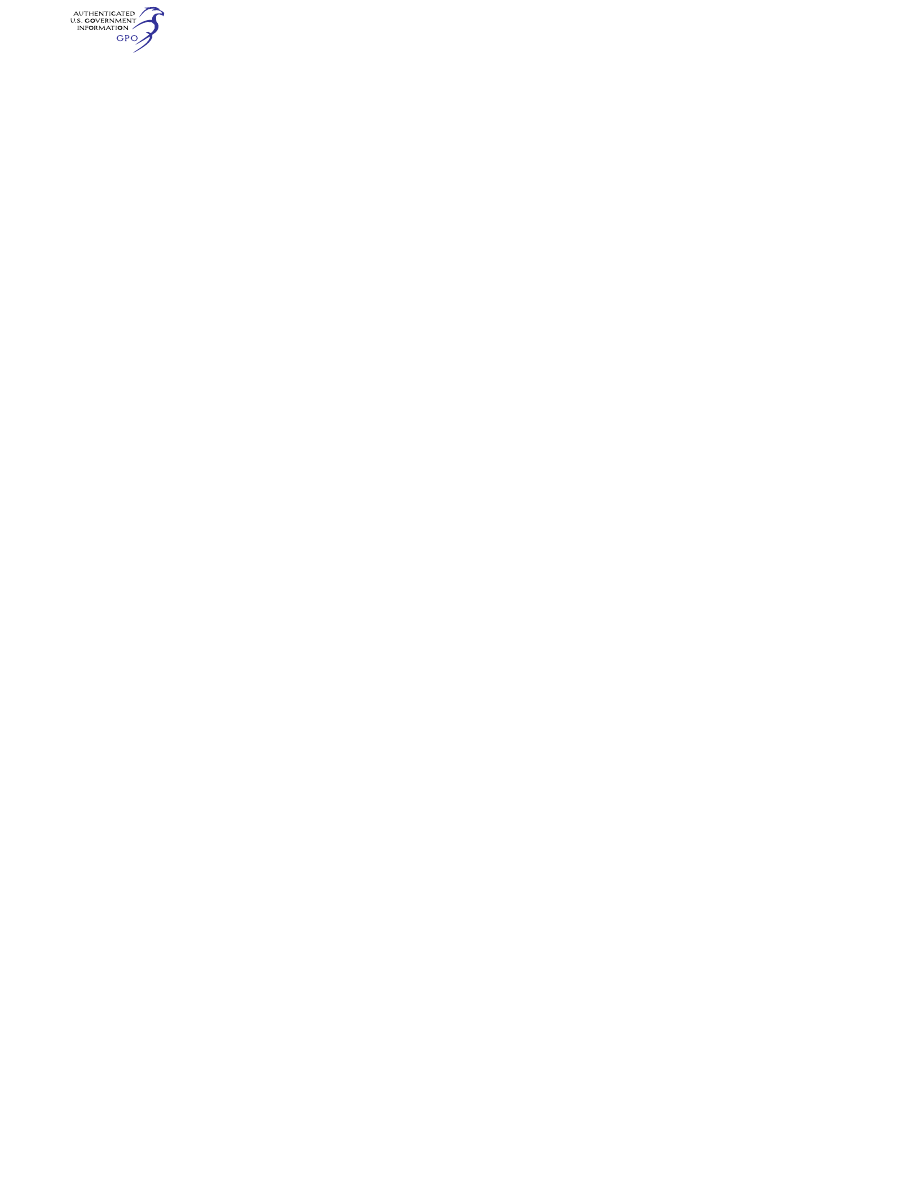
770
14 CFR Ch. I (1–1–24 Edition)
§ 36.6
these noise levels are or should be ac-
ceptable or unacceptable for operation
at, into, or out of, any airport.
[Doc. No. 9337, 34 FR 18364, Nov. 18, 1969, as
amended by Docket FAA–2015–3782, Amdt. 36–
31, 82 FR 46129, Oct. 4, 2017]
§ 36.6
Incorporation by reference.
(a) Certain material is incorporated
by reference into this part with the ap-
proval of the Director of the Federal
Register under 5 U.S.C. 552(a) and 1
CFR part 51. All approved material is
available for inspection at the loca-
tions in this paragraph (a) and may be
obtained from the sources detailed in
paragraphs (a)(1) through (12) of this
section.
(1) The U.S. Department of Transpor-
tation, Docket Operations, West Build-
ing Ground Floor, Room W12–140, 1200
New Jersey Avenue SE., Washington,
DC 20590.
(2) Federal Aviation Administration
New England Regional Headquarters,
12 New England Executive Park, Bur-
lington, MA 01801.
(3) Federal Aviation Administration
Eastern Region Headquarters, Federal
Building, John F. Kennedy Inter-
national Airport, Jamaica, NY 11430.
(4) Federal Aviation Administration
Southern Region Headquarters, 1701
Columbia Avenue, College Park, GA
30337.
(5) Federal Aviation Administration
Great Lakes Region Headquarters,
O’Hare Lake Office Center, 2300 East
Devon Avenue, Des Plaines, IL 60018.
(6) Federal Aviation Administration
Central Region Headquarters, Federal
Building, 601 East 12th Street, Kansas
City, MO 64106.
(7) Federal Aviation Administration
Southwest Region Headquarters, 2601
Meacham Boulevard, Fort Worth, TX
76137.
(8) Federal Aviation Administration
Northwest Mountain Region Head-
quarters, 1601 Lind Avenue SW,
Renton, WA 98055.
(9) Federal Aviation Administration
Western Pacific Region Headquarters,
15000 Aviation Boulevard, Hawthorne,
CA 92007.
(10) Federal Aviation Administration
Alaskan Region Headquarters, 222 West
7th Avenue, #14, Anchorage, AK 99513.
(11) Federal Aviation Administration
European Office Headquarters, 15 Rue
de la Loi, Third Floor, B–1040, Brussels,
Belgium.
(12) The National Archives and
Records Administration (NARA). For
information on the availability of this
information at NARA, call 202–741–6030
or go to
http://www.archives.gov/fed-
eral
_
register/code
_
of
_
federal
_
regulations/
ibr
_
locations.html.
(b) International Civil Aviation Orga-
nization (ICAO), Document Sales Unit,
999 University Street, Montreal, Que-
bec, H3C 5H7, Canada.
http://
www.icao.int/publications/Pages/de-
fault.aspx.
(1) International Standards and Rec-
ommended Practices, Annex 16 to the
Convention on International Civil
Aviation, Environmental Protection,
Volume I, Aircraft Noise, Third Edi-
tion, July 1993, Amendment 7 effective
March 21, 2002, IBR approved for
§ 36.1(f), and appendices A and B to part
36.
(2) International Standards and Rec-
ommended Practices, Annex 16 to the
Convention on International Civil
Aviation, Environmental Protection,
Volume I, Aircraft Noise, Seventh Edi-
tion, July 2014, Amendment 11–B, appli-
cable January 1, 2015, IBR approved for
§ 36.1(f) and appendices A and B to part
36.
(c) International Electrotechnical
Commission (IEC) 3 Rue de Varembe,
Case Postale 131, 1211 Geneva 20, Swit-
zerland,
http://www.iec.ch/standardsdev/
publications/?ref=menu.
(1) Publication No. 179, Precision
Level Sound Meters, (IEC 179) 1973, IBR
approved for appendix F to part 36.
(2) Publication No. 561, Electro-
acoustical Measuring Equipment for
Aircraft Noise Certification, first edi-
tion, 1976, (IEC 561), IBR approved for
appendices G and J to part 36.
(3) Publication No. 651, Sound Level
Meters, first edition, 1979, (IEC 651),
IBR approved for appendices G and J to
part 36.
(4) Publication No. 804, Integrating-
averaging Sound Level Meters, first
edition, 1985, (IEC 804), IBR approved
for appendix J to part 36.
(5) Publication No. 61094–3, Measure-
ment Microphones—Part 3: Primary
Method for Free-Field Calibration of
VerDate Sep<11>2014
09:06 Jun 28, 2024
Jkt 262046
PO 00000
Frm 00780
Fmt 8010
Sfmt 8010
Y:\SGML\262046.XXX
262046
jspears on DSK121TN23PROD with CFR
